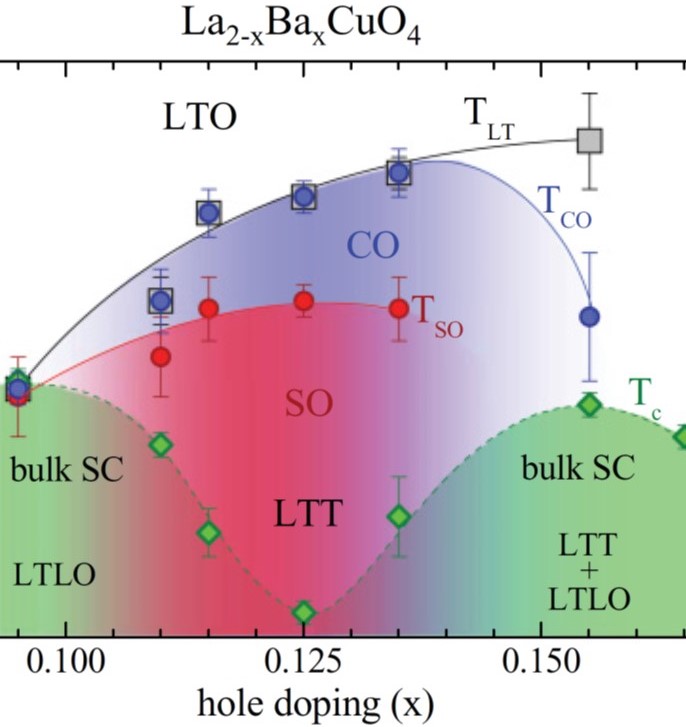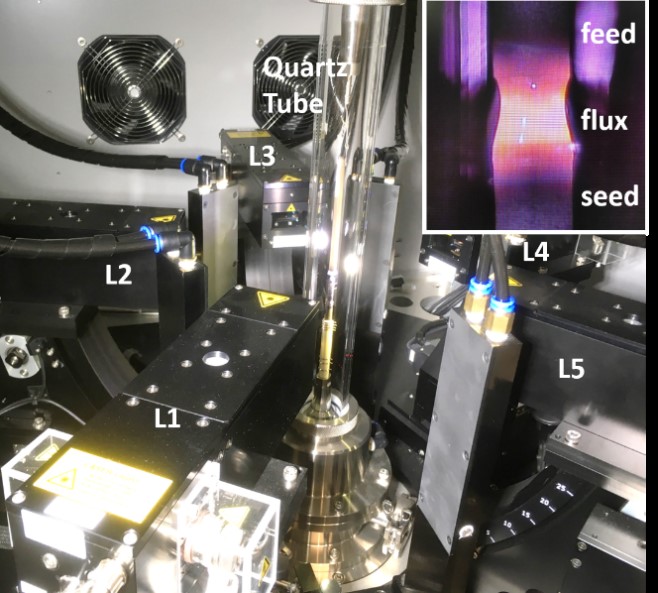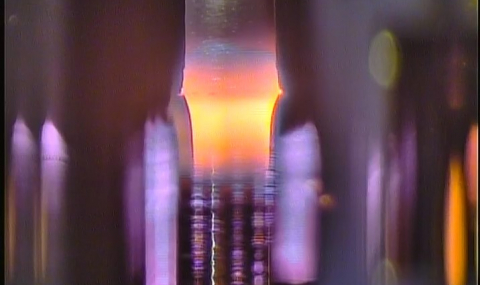Materials with strong electronic correlations are fascinating as they often display complex phase diagrams, and are notoriously hard to describe theoretically. The cuprate high temperature supercondcutors are a prime example. Beside record high superconducting transition temperatures, the cuprates are particularly famous for showcasing an intricate relationship of superconductivity with spatially modulated charge and spin correlations. To this day it is unknown whether this entangled mix of energetically close ground states is quintessential for supercondutivity to occur.

Our research is concentrated on finding answers to this pivotal question. Our laser based traveling-solvent floating-zone furnace is the ideal tool to synthesize high quality single crystals of cuprate superconductors and related oxide materials. It allows us to create the ideal compounds to address outstanding questions.

The 2018 discovery of superconductivity in magic angle bilayer graphene, and a strong resemblance of the electronic phase diagram with that of the cuprates, adds to the fascination of strongly correlated electron systems, and the desire to understand the underlying physics. New opportunities also emerged in 2019 when superconductivity was discovered in a nickelate with similar electronic structure as the cuprates.
References:
-
J. Choi et al., Spatially inhomogeneous competition between superconductivity and the charge density wave in YBa2Cu3O6.67, Nature Communications. 11, 990 (2020)
-
A. J. Achkar et al., Nematicity in stripe ordered cuprates probed via resonant x-ray scattering, Science 351, 576 (2016).
-
M. Hücker, et al., Competing charge, spin, and superconducting orders in underdoped YBa2Cu3Oy, Phys. Rev. B 90, 054514 (2014).
-
M. Hücker et al., Stripe order in superconducting La2-xBaxCuO4 for 0.095 ≤ x ≤ 0.155, Phys. Rev. B 83, 104506 (2011).
- M. Hücker et al., Spontaneous symmetry breaking by charge stripes in high-pressure phase of superconducting La1.875Ba0.125CuO4, Phys. Rev. Lett. 104, 057004 (2010).


